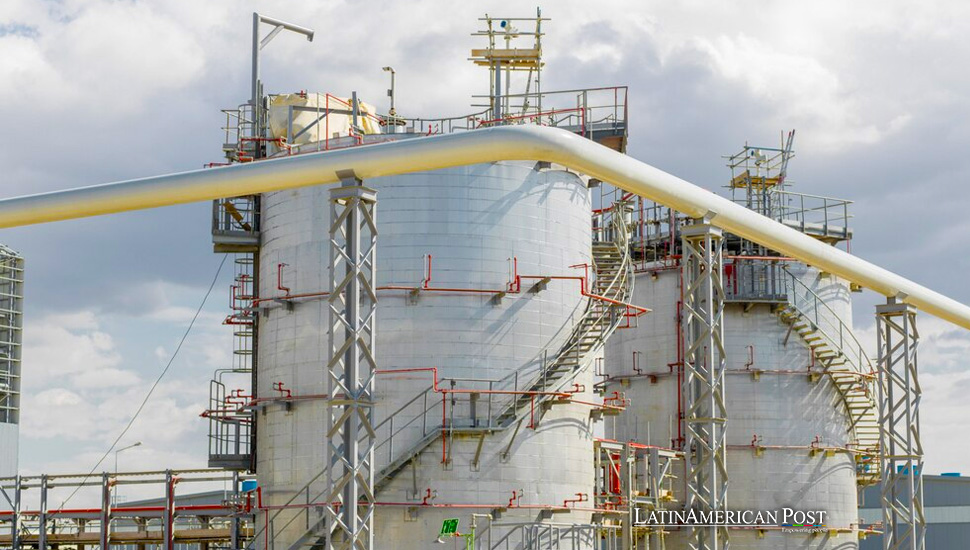Mexico Pacific and ExxonMobil Seal Major LNG Expansion Deal

In a pivotal move that underscores the growing synergy in the global energy sector, Mexico Pacific has inked a monumental deal with oil and gas giant ExxonMobil. This agreement, involving the supply of an additional 1.2 million tonnes per annum (MTPA) of liquefied natural gas (LNG), is not just a business transaction but a harbinger of a more significant shift in the energy dynamics of the Americas.
Mexico Pacific’s Expansion Milestone
The deal marks a significant milestone for Mexico Pacific, enabling it to forge ahead with its ambitious expansion plans for the Saguaro Energia LNG plant. Located on the picturesque west coast of Mexico, this facility is poised to become a linchpin in the LNG supply chain, particularly for Asian markets.
ExxonMobil LNG Asia Pacific, a key player in the global energy market, has secured the agreement to purchase LNG from a proposed third production unit, or train, at the Saguaro Energia project. This addition to the existing infrastructure is a testament to the growing demand for LNG and the strategic importance of the Saguaro Energia plant in meeting this demand.
The new deal is structured on a free-on-board basis, with Exxon committing to a 20-year term. This long-term agreement provides a stable and predictable revenue stream for Mexico Pacific. It underscores significant energy players’ confidence in the company’s ability to deliver.
CEO’s Optimism and Investment Decision
Ivan Van der Walt, CEO of Houston-based Mexico Pacific, expressed optimism in a statement, highlighting that the current sales agreements are the final pieces needed for the company to make a conclusive investment decision later this year on the construction of the third train. This decision will mark a significant leap forward in the project’s development, bringing it closer to fruition.
The latest agreement builds on a previous deal made last year, wherein Exxon agreed to purchase approximately 2 million MTPA from the first two LNG trains of the Saguaro Energia project. This cumulative commitment from ExxonMobil reflects a growing trend in the energy sector, where companies are increasingly looking to diversify their energy sources and invest in sustainable and reliable supplies.
Revolutionizing LNG Dynamics
The Saguaro Energia project, once fully operational, is set to revolutionize LNG supply dynamics. With a projected shipping capacity of 15 million MTPA of LNG, predominantly to Asian markets, the project is strategically positioned to leverage gas from the U.S. Permian Basin. This transcontinental energy flow not only signifies a new era in energy interdependence but also showcases the innovative spirit and collaborative potential of the Americas in the global energy landscape.
The scale of the project is as impressive as its strategic importance. With a price tag exceeding $15 billion, as stated by officials from the Mexican state of Sonora last year, the Saguaro Energia project represents one of the most significant investments in the region’s energy infrastructure. This financial commitment underscores the confidence in the project’s future and its potential to reshape the global LNG market.
Transformative Journey in the Energy Sector
As Mexico Pacific gears up for the final investment decision on the third train, the company stands at the forefront of a transformative journey in the energy sector. This expansion is not just about increasing capacity; it’s about redefining the role of LNG in the global energy mix and strengthening the energy ties between North America and Asia.
Also read: Chile’s Lithium Protest Unveils Complex Balancing Act
The deal between Mexico Pacific and ExxonMobil indicates the shifting dynamics in the global energy market. It highlights the growing importance of LNG as a vital component of the energy mix and the strategic role that the Americas, particularly Mexico, play in this evolving landscape. As the Saguaro Energia project moves forward, it promises to meet the rising demand for LNG and pave the way for a more interconnected and resilient global energy system.





